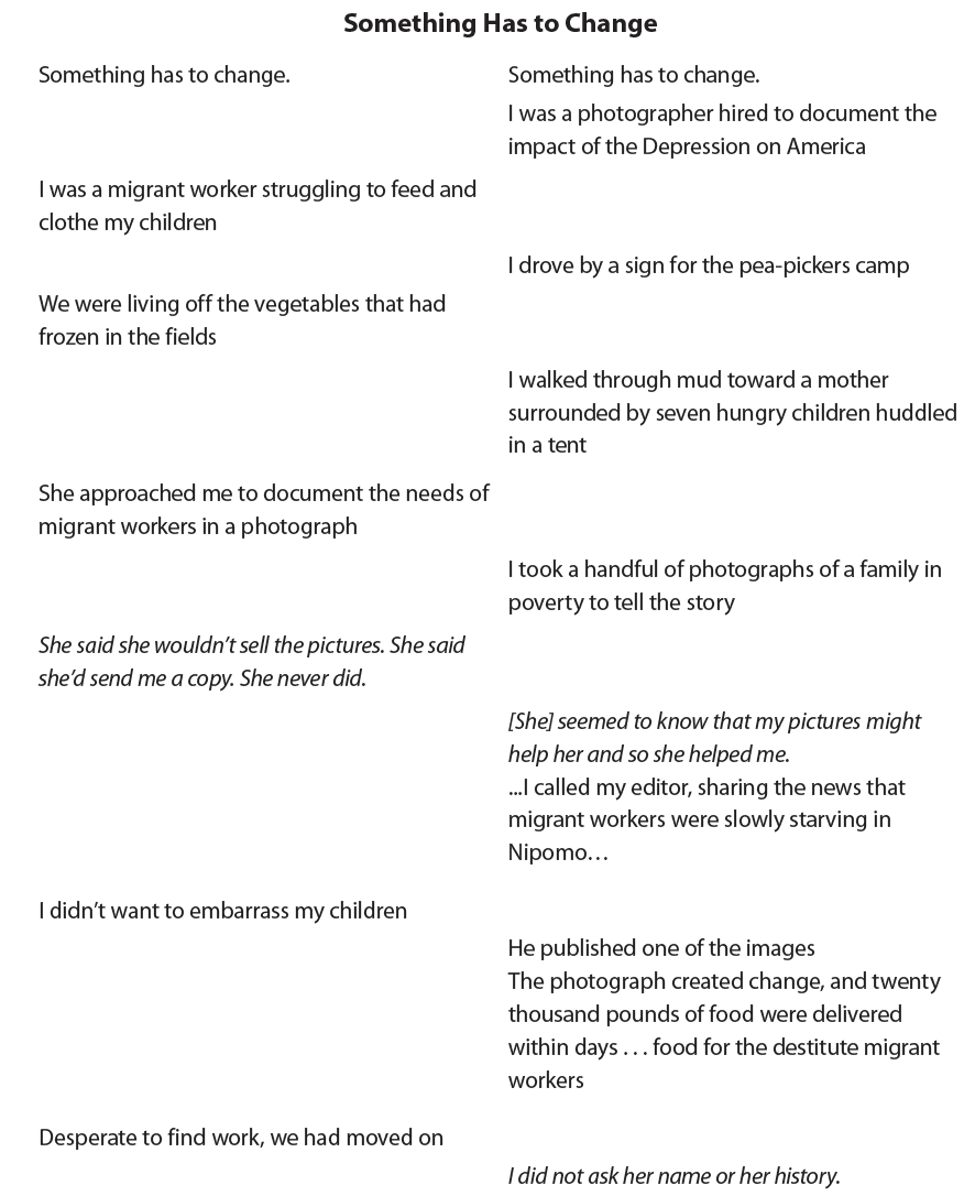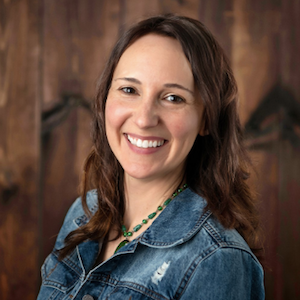Integrating Arts in ELA: Creating 2-Voice Poems
Jennifer Bogard and Lisa Donovan are experts in integrating the Arts into the K-12 core curriculum. Here they focus on an activity designed for the Language Arts classroom that engages student researchers in delving into multiple sources and unearthing differing perspectives of famous artistic creations.
By Jennifer Bogard, Ph.D. and Lisa Donovan, Ph.D.
Why create a poem for two voices?
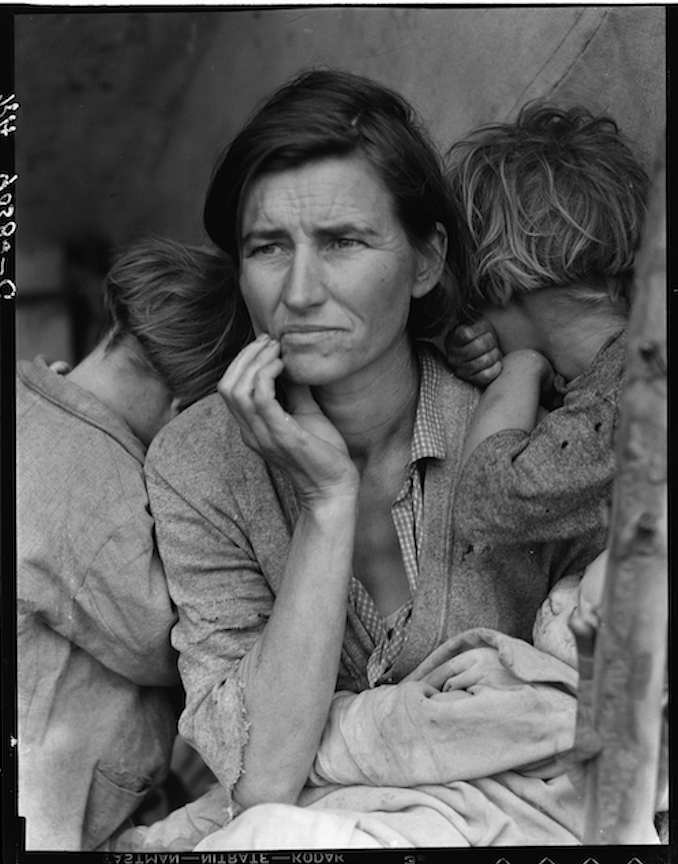
Migrant Mother is the iconic image of the Dust Bowl era. Given the fame of the image, was she ever compensated? What are the ethics of a situation like this? You might be thinking of your own life and photos being shared in today’s digital world.
Dorothea Lange’s photograph Migrant Mother is well-recognized but often the voice of the subject is not present. Do you know her name? Florence Owens Thompson is the migrant mother.
The activity “Poems for Two Voices” invites students to delve deep into the research of primary and secondary sources in order to bring forth multiple voices.
In the poem below, entitled Something Has to Change, the voices of the migrant mother Florence Owens Thompson and the photographer Dorothea Lange are brought to life using direct quotations and particular words and phrases drawn from resources in a text set. The poem for two voices allows for an imagined conversation between the two, inviting us to remember that there are multiple perspectives and complexities within a given story.
As you read Something Has to Change, notice the structure of the poem for two voices and how this structure reveals the unique ideas and differences between the two perspectives, in addition to the shared idea that “something has to change.”
Download a PDF of this Sample Poem for Two Voices. From Integrating the Arts in Language Arts, Second Edition, pages 98–99. © Shell Education, 2022. Shared with permission.
Informing perspectives with a text set
After you download the PDF above, take a look at its discussion of the text set used to create the two-voices poem. The texts address multiple modalities and genres. They provide evidence to inform the two different perspectives on the same event: (1) photographer Dorothea Lange’s stop at a migrant worker camp during the Dust Bowl era; and (2) her subjects, migrant worker Florence Owens Thompson and her children.
Creating a poem for two voices is an engaging approach to building students’ skills in learning how to cite sources and achieve standards around locating specific evidence in text. (Check out a useful article on citing sources in poetry from the Simmons Library.)
For example, in creating our sample poem we drew evidence from the Smithsonian Magazine’s 2002 article, “Migrant Madonna” – which quoted from Lange’s field notes – to inform the photographer’s perspective in the poem:
“I did not ask her name or her history.”
The sharing of both voices back and forth in the poem can reveal conflicting accounts of the same moment in time.
The Library of Congress has identified a series of related Migrant Mother texts that would also bolster student comprehension on the topic.
Student engagement and excitement
As students identify a topic and craft their own poem for two voices, they are authentically interested in figuring out how best to bring each voice forward, what ideas and moments to illuminate, and how to bring out insights in placing the voices in conversation.
The process of crafting the poem will drive students back to the resources they’ve identified to draw out key ideas that will help develop the poem. Moving between text and poem becomes an authentic and an iterative process that engages students and develops a sense of excitement and ownership.
Craft ideas for poems for two voices
We’re often asked for specific grade level ideas for the Poem for Two Voices activity. We included examples for grades K-2, 3-5, 6-8 and 9-12 in our book. Click here to download them.
These additional PDF resources from our book might also be helpful in exploring poems for two voices in your classroom.
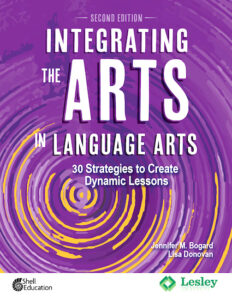
► Tips for Performing Poetry (page 102)
► Elements of Poetry (page 91)
► Poetry Craft Tips (page 100)
► Read the chapter on Integrating Music.
NOTE: Downloads shared with permission from Integrating the Arts in Language Arts: 30 Strategies to Create Dynamic Lessons, 2nd Edition by Jennifer M. Bogard and Lisa Donovan (Shell Education, 2022).
References
Library of Congress Research Guides. n.d. “Dorothea Lange’s ‘Migrant Mother’ Photographs in the Farm Security Administration Collection.” Accessed August 9, 2021.guides.loc.gov/migrant-mother/ introduction. Retrieved from: https://guides.loc.gov/migrant-mother/
Found Poetry: Attribution & Copyright. A guide to the little-known but truly wonderful genre of found poetry. Retrieved from: https://simmonslis.libguides.com/c.php?g=1033601&p=7492702
Library of Congress, Prints & Photographs Division, FSA/OWI Collection, [reproduction number, e.g., LC-USF34-9058-C] Farm Security Administration (FSA) / Office of War Information (OWI) collection. Retrieved from: https://guides.loc.gov/migrant-mother/bibliography
Jennifer M. Bogard, Ph.D., is an educator and author. She teaches courses in literacy and integrating the arts for Lesley University. Dr. Bogard taught elementary school and is a former literacy coach. She presents for schools and professional organizations and writes books, journal articles, and literature guides for educators.
Jenn writes books for children, including The ABCs of Plum Island, Massachusetts, described by Kirkus Reviews as “An unexpectedly soulful and absorbing chronicle of regional history in a scrapbook-style work.”
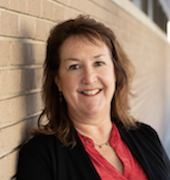
Lisa served as co-director of the Berkshire Regional Arts Integration Network (BRAINworks) and as Director of the Creative Compact for Collaborative Collective Impact (C4), and director of the MCLA Institute for the Arts and Humanities. She is editor and coauthor of a five-book series on arts integration through Shell Education and co-author of Teacher as Curator: Formative Assessment and Arts-Based Strategies. She is also a TEDx presenter and the 2021 Recipient of the Massachusetts Arts|Learning Irene Buck Service to Arts Education Award.

